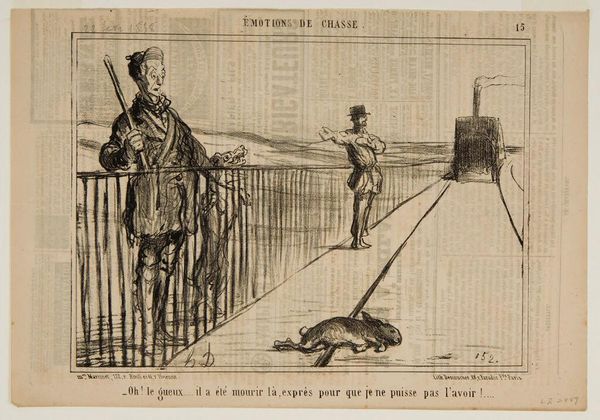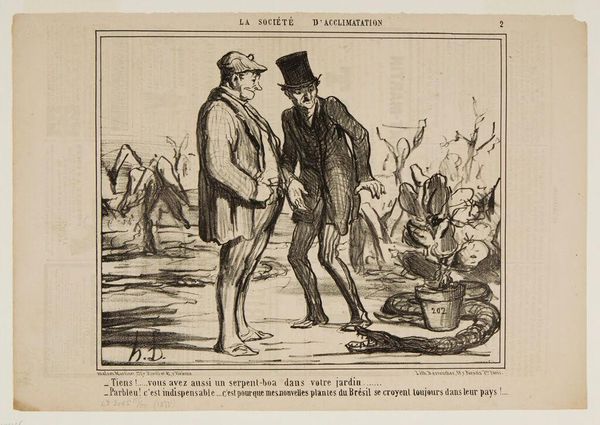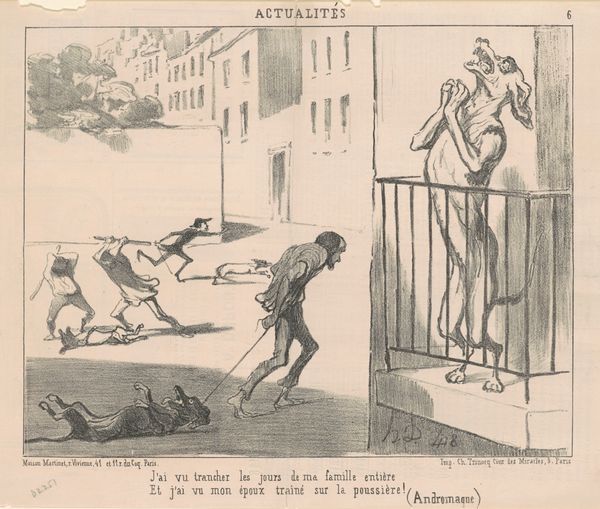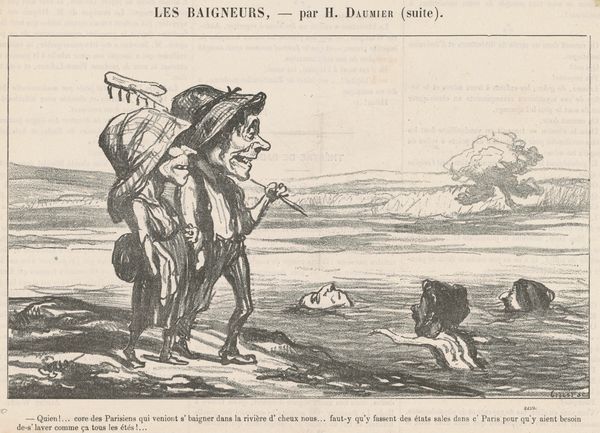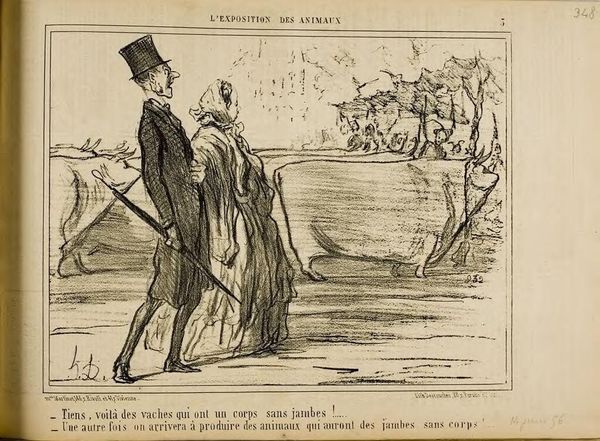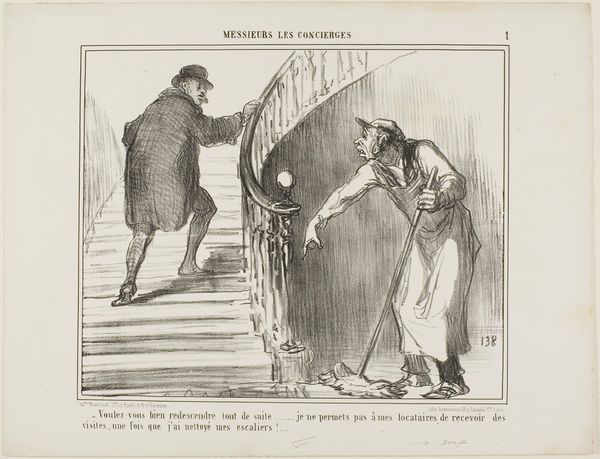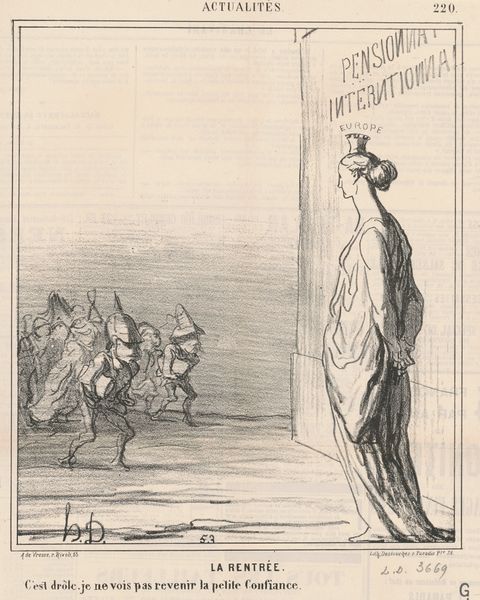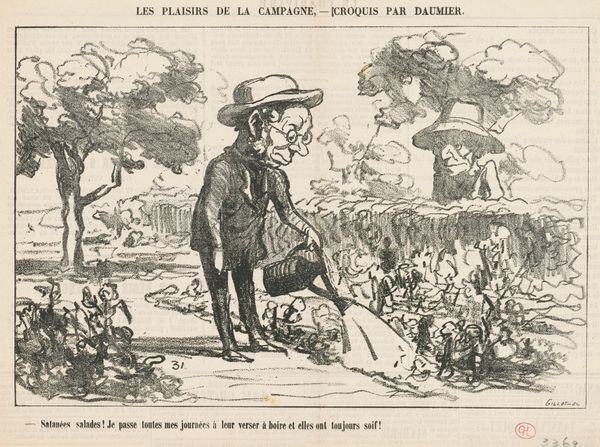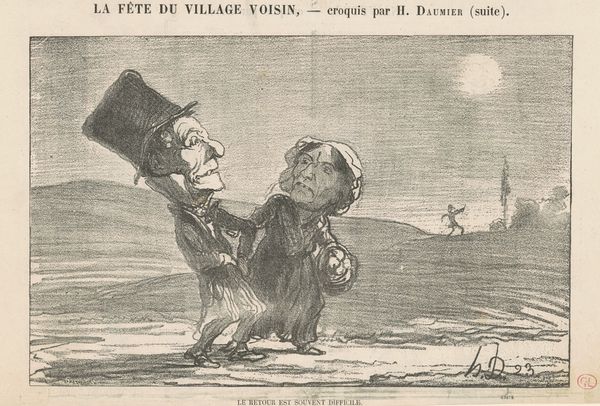
drawing, lithograph, print, paper, ink
#
drawing
#
narrative-art
#
lithograph
# print
#
french
#
caricature
#
paper
#
ink
#
romanticism
#
genre-painting
Copyright: National Gallery of Art: CC0 1.0
Curator: This lithograph, created by Honoré Daumier around the 19th century, presents quite the sardonic narrative. The title, "Oh! Le gueux ... il a été mourir la ...," translates to something like, "Oh! The rascal… he died there..." Editor: My initial impression is a sense of stark contrast, literally in the shades of ink, but also between the exaggerated figures. The sharp diagonal of the railway line leads my eye directly to the looming train in the background. There is a theatrical dynamism conveyed. Curator: Daumier's choice of lithography is significant here. It's a printing process that allows for quick reproduction and dissemination, making it a potent tool for social commentary. The caricature style allows him to exaggerate features and amplify the emotional impact. We should consider Daumier's prolific output, much of which satirized the bourgeoisie and commented on the rapid changes in Parisian society. The material of ink on paper here becomes the battleground for social commentary. Editor: Agreed. And yet, despite the overt social critique, look at how Daumier employs line. The repeated verticals of the bridge on the left oppose the unwavering horizontals elsewhere. The whole scene, with its ironic subtitle, offers this brilliant study of frustrated ambition and missed opportunities. The dead hare skewered on a rail speaks of more than just the failed hunt. Curator: Precisely. The dead rabbit is clearly meant as a criticism towards the French upper class and its failed ambitions and economic inequities. The labor and raw material, and the processes to bring it to the audience. Editor: I see. So by looking at it formalistically you observe how the composition guides our attention. While materialistically, the class conflict are apparent by viewing it that the subject is for consumption, especially considering the choice of medium. Curator: Exactly. Daumier leverages lithography, making art accessible beyond the elite, thus challenging traditional boundaries between high art and craft, allowing mass access for consumption and discourse. Editor: Seeing it both ways opens it up to so many interesting readings of the artist, its formal qualities, and its context in 19th-century France. A single, static reading does not reveal the artwork as successfully. Curator: Yes, analyzing its material process brings clarity to the commentary Daumier intended, while close readings of it is how it succeeds formally as a striking political image.
Comments
No comments
Be the first to comment and join the conversation on the ultimate creative platform.
